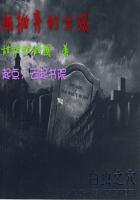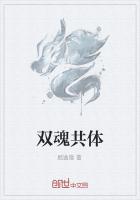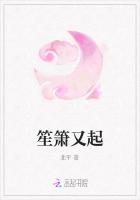Chinese and Foreign Wushu Exchange
Chinese Wushu has been improved and integrated during cruel competition. It faced many tests against other exotic martial arts. In history, Chinese Wushu confronted two major challenges. The first one happened in the 16th century during the Ming Dynasty when Samurais invaded China. The second one happened in the early 20th century, when the opponents included both Samurais and Western boxers. Chinese Kungfu masters won the challengers at last, but not without recognizing the advantages of other styles of fighting and the deficiencies of Chinese Kungfu.
Since the 1980s, Chinese Wushu eventually became more internationally popular, became the first target for competitors of the world fight circle. Chinese Wushu has experienced three other challenges. The first challenge was anti-invasion, and the second challenge was revenge on the “Sick Man of East Asia.” The third challenge came in the form of athletic competition on the basis of fighting fairly and politely. For the third challenge, Wushu lost no burden of history and has embraced competitive sport.
Two Big Challenges in the Martial History
Two major challenges to the Chinese martial art came from foreign fighting; one occurred in the middle of the Ming Dynasty, and the other in the early 20th century.
During the Jiajing Period of the Ming Dynasty (1522–1566), a large number of Japanese samurai, known as Wokou (Japanese pirates), invaded the Southeast area of China. These Japanese samurai were fierce and merciless. They colluded with Chinese pirates to attack and encroach Chinese prefectures and counties, burning, killing and looting wherever they went in Jiangsu, Zhejiang, Fujian and Guangdong provinces. Over a hundred years, the government of the Ming Dynasty moved out its armed forces to defeat the Japanese pirates.
The Japanese samurai are accustomed to using Wodao (long knife), which is slender and heavy with a thick back, and thin and cocked edge. Qi Jiguang, a Chinese military general and national hero during the Ming Dynasty, found that Chinese soldier knife skills were poorer than the Japanese samurai, so he trained his soldiers to use langxian (a utensil made of bamboo brush), big stick, long lance and other long weapons to fight against the Japanese Wodao, and made outstanding achievements in fighting against the Japanese pirates. This demonstrated the Chinese swordsmanship set was no better than that of Japan during the mid-Ming Dynasty. While Qi Jiguang defeated Japanese pirates while the military fought, competition between the Shaolin monks and Japanese samurai is argued to be the most direct competition between Chinese and Japanese Kungfu.
According to the historical records, in 1553 (the 32nd year of the Jiajing era), Japanese pirates began a large-scale invasion of Nanhui (belonging to Shanghai today). The Shaolin monks led the fight and utterly defeated the Japanese pirates. The Shaolin monks defeated the Japanese pirates many times, and more than 30 monks sacrificed their lives for the country.
More importantly, the Shaolin Kungfu defeated the long knife of the Japanese pirates, and taught the Japanese samurai, who consider themselves a world above others, the toughness of Chinese Kung Fu, creating proud records for Chinese Wushu history.
More than 300 years later, China and other foreign countries carried out another big battle at the end of the 19th century, which lasted nearly half a century, ending in the 1940s. The battle location began in Beijing before moving to Tianjin, Shanghai and then Tokyo. It was the true competition between the Chinese masters and foreign masters. After the fights were over, the label on old China, “Sick Man of East Asia,” was consigned to the dustbin of history. The Chinese Wushu circle shared the same hatred for the common enemy and wrote a song of moral sense for Chinese Kungfu.
According to statistics, the major fighting examples at that time included:
Che Yonghong (1833–1914, Xingyiquan style),defeated a Japanese samurai in 1888 in Tianjin; Huo Yuanjia (1869–1910, Mizongquan), scared the British giant away in Shanghai in 1910,before defeating four people from the Japanese Judo Association in Shanghai; Han Muxia (1867–1947, Xingyiquan style), won a fight against Russian strongman Kang Tyre in1918 in Beijing; Wang Ziping (1881–1973, legs and fists), defeated Russian strongman Kang Tyre in 1918 in Beijing, American strongman Alaman and Germany strongman in 1919 in Qingdao, before defeating Japanese Sato in 1919 in Jinan;
Chen Zizheng (1878–1933, eagle claw boxing), beat an American boxer in 1919 in Shanghai, and a British boxer in 1922 in Singapore; Sun Lutang (1861–1932, Taijiquan), defeated a Japanese samurai in 1922 in Beijing, and six Japanese samurai in 1930 in Shanghai; Tong Zhongyi (1879–1963, Liuhe boxing), beat a Japanese samurai in 1925 in Shanghai;
Yang Fawu (no details for date of birth, wrestling technique), gained a series of victories of three Japanese judo masters in 1930 in Tokyo;
Ji Wanshan (1903–?, Shaolin boxing), won a Russian strongman in 1933 in Harbin; Ma Jinbiao (1881–1973, Cha Quan), defeated an American man in the 1930s in Nanjing; Wang Xiangzhai (1885– 1963, Yi Quan), defeated Hungary Inge in 1928 in Shanghai, Japanese samurai in the 1940s in Beijing; Zhao Daoxin (1908–1990, Xingyi Quan, a student of Wang Xiangzhai), beat Norwegian Andersen in 1930 in Shanghai; Li Yongzong (a student of Wang Xiangzhai), defeated Italian James in the 1930s in Beijing; Li Raochen (1876–1973, Sanhuang Paochui), defeated Japanese samurai at the end of the 1930s in Beijing and Japanese samurai in the 1940s in Nanjing; Cai Longyun (1928–present, Hua Quan), defeated Russian strongman in 1943 in Shanghai, and American boxers in 1946 in Shanghai.















